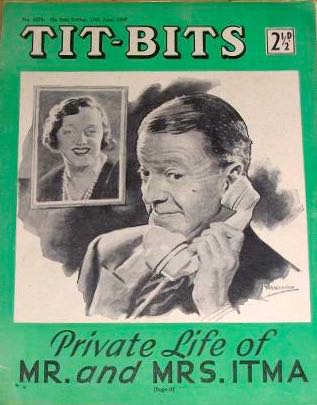
Empire magazine: this lot fetched £120 for 35 issues. That averages out at £3.40 a copy
I’ve put a lot of guidance on Ebay selling in this blog and also on Magforum’s Collecting Magazines page. But every seller is different and it’s difficult making judgements. Isla has emailed me with this query, which is a good opportunity to set out the main points:
I recently discovered that my Dad has a large collection of Empire magazines in the loft. There are almost all of the issues from 1989 (first issue) until about 2007 maybe later (it’s hard to tell as I haven’t been able to get them all out from the cupboard). Most of them are discoloured (like yellow/brown pages), I spotted at least one unfortunate coffee cup stain, a lot have minor rips and creases from where they’ve been read and some of the free posters have been removed (only a few issues have free posters). There are several collectors edition issues. I have read all of your information about selling but after looking at other listings on Ebay, I still can’t tell if they would be of enough value to be bothered to sell (I am quite happy keeping them to read/cut up). Do you think that they could be worth anything?
It’s always difficult to judge what sort of money makes it worth someone’s while getting up to speed on eBay. So, let’s look at this from the bottom up with the questions that come to my mind.
Is there a market in Empire magazine?
A quick search on eBay (Empire magazine -bbc for UK only) suggests there is, with 5,155 lots up for sale at present. But that’s also a lot of competition. Of these, about 2,100 are tagged with dates:
- 450 are marked as being from the 1990s;
- 851 from the 2000s;
- 834 from the 2010s.
Generally, older issues fetch more, but my experience suggests that subscriber-only collectors’ editions and special issues, such as the Star Wars issue of Empire from June 2005 with a breathing Darth Vader, are more valuable. Posters and special gifts make a difference too.
In terms of selling though, the asking price on live listings may not be a good guide. Many dealers put up hundreds of lots at high prices and are prepared to wait a long time for a sale. They just put it up on a buy-it-now and wait for months and generally have an eBay, or even a real, shop. In general, the cheaper your asking price, the quicker something will sell. So, next question…
What do copies of Empire actually sell for?
 To discover this, first of all use the left-hand menu on eBay to select only lots that have ended (completed). This gives 3,482 results.
To discover this, first of all use the left-hand menu on eBay to select only lots that have ended (completed). This gives 3,482 results.
We can then select only items that have sold (see the partial screen grab shown on the left). In this case, we get 854. This gives us a rough and ready ratio of about one in every four lots selling (if you look at the detail, it’s a crude measure because many listings are only up for a few days ands then get put up again when they don’t sell, but let’s not complicate things here). That’s not a bad figure, a calculation I did a while back on Country Life came out at just 13%.
 Now, we can list these by ‘Highest price + p&p’ in a dropdown menu near the top right of the eBay page. (Again, see the partial screen grab shown on the left.)
Now, we can list these by ‘Highest price + p&p’ in a dropdown menu near the top right of the eBay page. (Again, see the partial screen grab shown on the left.)
The highest price was for a magazine item about the British empire, so we can ignore that – though we might want to tweak our search by adding ‘-british’ to take out such items (though it would also remove listings that used British in their listing). This cuts the total to 801.
We can see that a bulk lot sold on the 5th of February for £120 plus £25 postage. This was for 35 issues dating back to 1993, 1994 and 1995. That averages out at £3.40 a copy. Note, though, that these are listed as VGC – very good condition. It seems unlikely that many of Isla’s copies are that good. As she says:
Most of them are discoloured (like yellow/brown pages), I spotted at least one unfortunate coffee cup stain, a lot have minor rips and creases
The February seller, funkymonkey62, stresses the condition, describing them as ‘All in very good condition’ and ‘Pre-owned but in excellent condition’ within the listing. Funkymonkey62 also has a solid record of 1,283 sales, with 117 of the last 118 items having positive feedback.
What can Isla expect for her discoloured magazines?
Isla could put up the complete three years of issues, but would have to be honest about the condition. Photos help here, so people can make their own judgement. The discolouration is likely to have come from exposure to sunlight or damp. At least the magazines are complete, no pages ripped out or photos cut out.
The postage cost is likely to be the same, and the asking price: half the VGC price? That’s £1.70 each or £61 for the 36 issues plus postage.
Ilsa has far more than that, of course.
almost all of the issues from 1989 (first issue) until about 2007
Let’s assume she has every issue from June 1989 to the end of 2006, and that there were 12 issues a year. That’s 7 issues plus 17 full years, or 211 copies. So, if they all sold for £1.70 each, the grand total would be £358. However, there’s another question…
Are all copies worth the same?
The answer, of course, is No, even assuming they are in the same condition. First issues and older issues tend to fetch more because they are less likely to have survived. And the eBay results give evidence here, with another two high-earning sales.
 In the first example, the winner of two bidders in an auction paid £43 plus £8 postage for copies of the first ten issues: an average of £4.30 each. This was almost a quarter more per copy than funkymonkey62 achieved for their VGC copies. The condition description was ‘in bookcase for the past 30 years – spine getting the only bit of daylight. No fading, excellent colour’. This is a better form of description because it’s more objective, allowing some one to make their own judgement, whereas ‘VGC’ is more subjective.
In the first example, the winner of two bidders in an auction paid £43 plus £8 postage for copies of the first ten issues: an average of £4.30 each. This was almost a quarter more per copy than funkymonkey62 achieved for their VGC copies. The condition description was ‘in bookcase for the past 30 years – spine getting the only bit of daylight. No fading, excellent colour’. This is a better form of description because it’s more objective, allowing some one to make their own judgement, whereas ‘VGC’ is more subjective.
Another listing contradicts this though: issues 1-56 in unique bindings sold for just £50 – less than £1 each. The condition was described: ‘Kept in excellent condition due to custom binding. (My Dad collects railway magazines and had them bound so I wouldn’t turn them all into posters!).’ But this was a ‘collection only’ offer, greatly limiting the potential buyers. And the seller probably underpriced them – remember funkymonkey62’s £120 buy-it-now for £35 issues. But if the seller wanted to get a bulky item out of the house quickly, it worked for them.
Is it better to split up a collection?
If you want to spend the time getting to learn eBay and are prepared to do the research and live close to a Post Office, you can certainly earn more, particularly if there are unopened posters and supplements.
The tactic here is to find use eBay searches to identify the best issues, sell those separately, and then sell the rest in bigger lots, probably by year (but check on the most efficient postal bands).
As an example, four copies of Empire‘s Fantastic Beasts special edition have sold for between £28 and £48 (issue 330, Dec 2016). The standard newsstand issue fetches £2-£5. It’s a similar story for Empire‘s Mandalorian Baby Yoda subscriber edition from April 2020 – £20-£40, and other recent Star Wars specials. Individual copies of the first issue have sold for between £6.41 (auction) and £22.99 inclusive (a buy-it-now).
So, what should Isla do?
Only Isla can decide on her priorities and the balance between time spent and money earned. In her shoes, assuming she wants the cash, I would suggest:
- Pick out the issues that fetch the most from the sold issues selection on eBay.
- Pick out the best issues by condition.
- Experiment with these one at a time using buy-it-now listings to judge the best selling price.
- Sell the rest in chunks, but again experiment with doing it by year or perhaps theme: Star Wars, Marvel heroes, etc.
Any tips for the listings?
- My research into Country Life suggests that building up eBay expertise pays off. The conclusion was: ‘people who fill out data fields for a listing are three times as likely to sell their magazine‘.
- Put a lot of pictures and details in the listings. Mention the films and actors covered in the big articles and who’s on the cover or in any posters, or whole page pictures.
- Make the descriptions objective. Describe the copy (all pages complete, no creasing to cover, clean, demo a no-smoking home), rather than judge (excellent condition). Above all, be open and honest; refer to the photos in the description.
- Before you put up an issue, check out the competition. If you want to sell quickly, price low; be prepared to wait if you aim high. Watch out for news or new films relevant to the issue you’re selling – topicality can raise prices.
- Make the best use of the limited character you have in the main description – think about what words people use for searching. Leave out filler words such as ‘a’ and ‘the’.
- Look at the sold listings for tips on descriptions. Compare these with those that don’t sell, so you can work out what works.

 To see almost 500 magazine covers and pages, look out for my book,
To see almost 500 magazine covers and pages, look out for my book, 






































































































